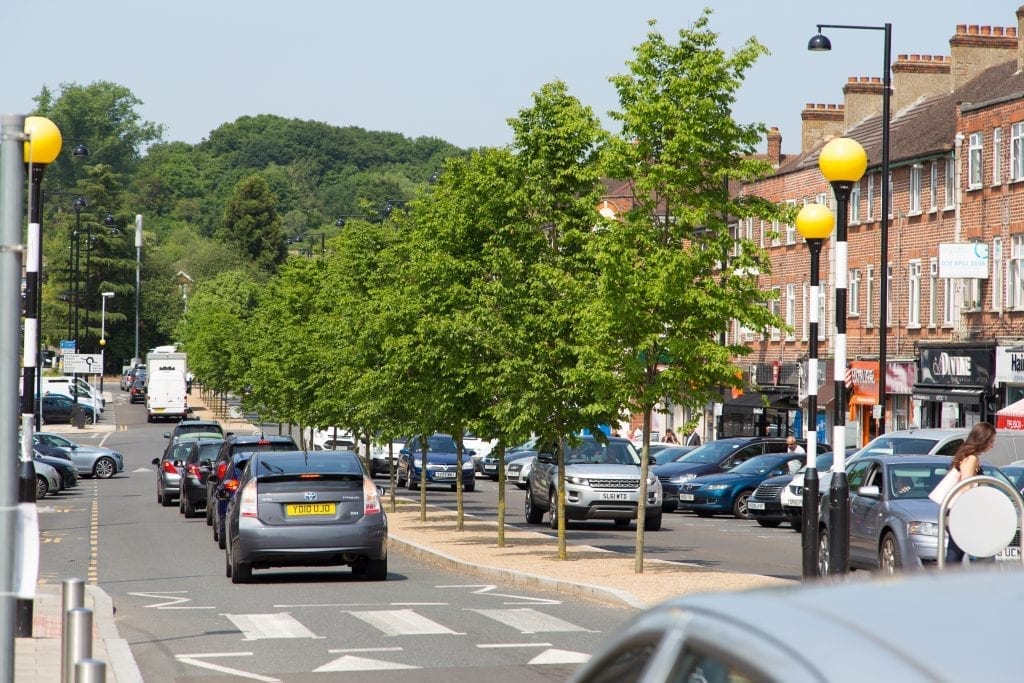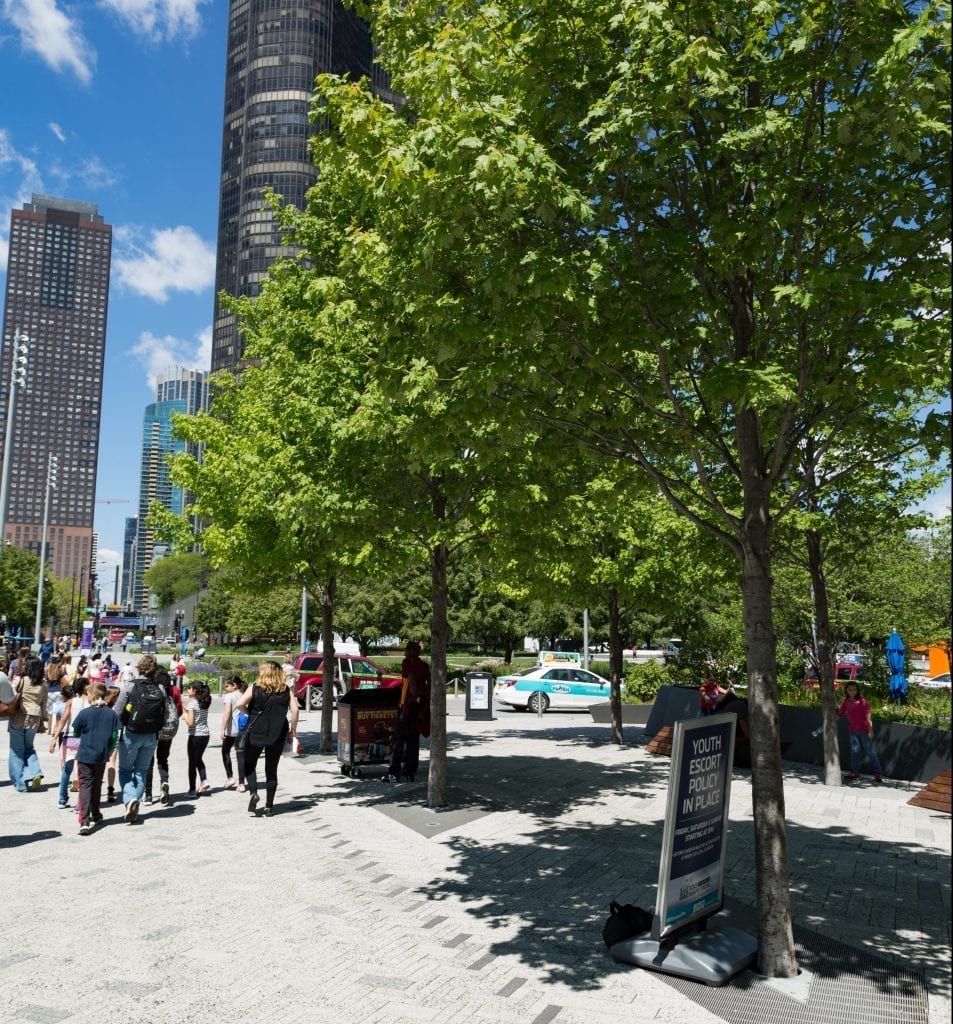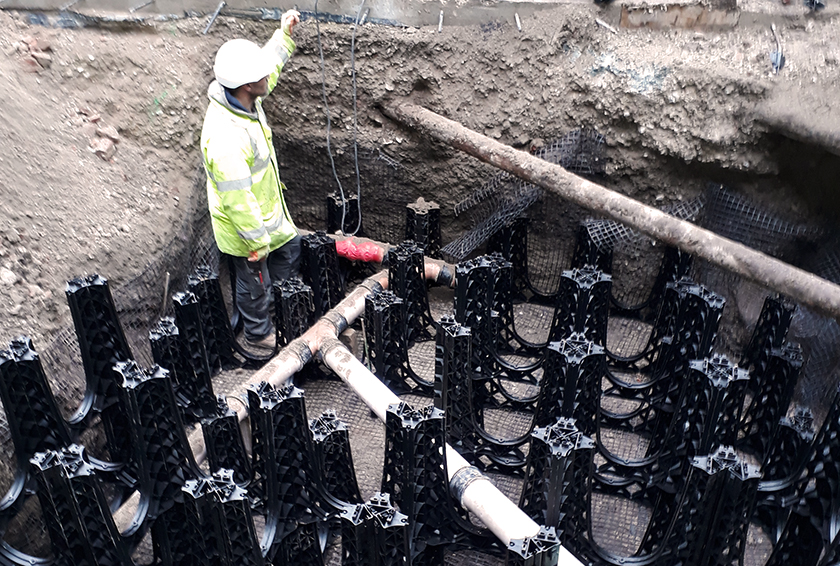We are all aware of the facts and figures relating to the effects of poor air quality on both human and animal populations across our urban environments.
Indeed, there are communities in semi-rural areas and smaller towns and cities suffering from poor quality air, that one wouldn’t usually associate with having a ‘pollution problem’. The cleanliness of our air transcends geographical and political constructs and there are opportunities to engage in a multidisciplinary, global journey towards a suite of solutions for future urban areas.

Having spoken with a number of industry experts in the area of air quality, the common consensus is that although there are arguably disparate and fragmented facts and figures relating to air quality, urban trees in the built environment have a vital role to play in the future resilience of our towns and cities and can be incorporated across a number of schemes and contexts to increase the breathability of towns and cities.
So what are the key factors to consider?
Irrespective of the need to ensure we integrate a wide variety of species across the built environment to add value in terms of biodiversity and climate change mitigation, landscape architects, planners and developers should be aware of the top choice species for carbon sequestration and the removal of the pollutants most harmful to human health.

From this information, we can design and implement schemes on the premise of incorporating a broader palette of such species that can achieve the greatest impact on air quality without instigating street scenes entirely dominated by one species. An engineered, flexible modular soil support system allows designers and installers to plant any variety of species into a single system. Whether it’s a combination of offset tree pits or linear tree trenches, there is no restriction on choice.
How long until we see the results?
This is the key factor when considering the effectiveness of any form of green infrastructure in removing harmful pollutants. It will be self-evident that tiny, lollipop trees, fighting for their lives having been planted into an inadequate underground environment, will be unable to remove the amount of pollutants they could if they were enabled to reach their full maturity with the adequate space and volume of uncompacted soil. Canopy cover and healthy, robust leaves are the crucial components for success and with this in mind, using systems like RootSpace with the correct mechanisms for irrigation and aeration, trees planted into the hard landscape will be able to reach their full potential.

Design and Placement of Trees
We always live by the maxim of right tree and right place and never has this been more important than when we are designing and installing for air quality benefits. There is research that identifies a number of planting arrangements that can exacerbate the capture of pollutants under the canopy, therefore the strategic design of tree pit placement will enable cities of the future to thrive without boulevards of smog unable to dissipate through lack of forethought at the design stage.

These considerations have had a fundamental impact on the development of product here at GreenBlue Urban as we know that the underground constraints across our towns and cities often mean that tree pits are placed in the spaces that have the least number of services and utilities but that might not be the best for enhancing the ecosystem services they can provide. It is also often the case that some of our pollution hotspots around highways and transport hubs are often the most complex to integrate ambitious planting schemes. This is precisely why our two sizes of RootSpace soil support system are here to make sure there’s a solution to deal with the underground requirements of trees, so that above ground they can do the work we desperately need them to.

For more on the valuation and modeling available to measure the impact of the urban forest on pollution, see the Treeconomics website.
A 2016 study of Strasbourg’s urban forest provides an innovative paradigm of integrating the i-tree eco software with air pollution data.
The emphasis of public trees provides an insight into trees as more than a mere amenity feature, that their maintenance should be elevated to the place of what many municipal authorities consider to be more essential infrastructure.
Our latest Podcast with Chris Churchman of Churchman Landscapes discusses research undertaken with the University of Birmingham on the mitigation of air pollution and the endorsement of how intuitive design and planting of trees can improve air quality. Listen to the podcast here.
